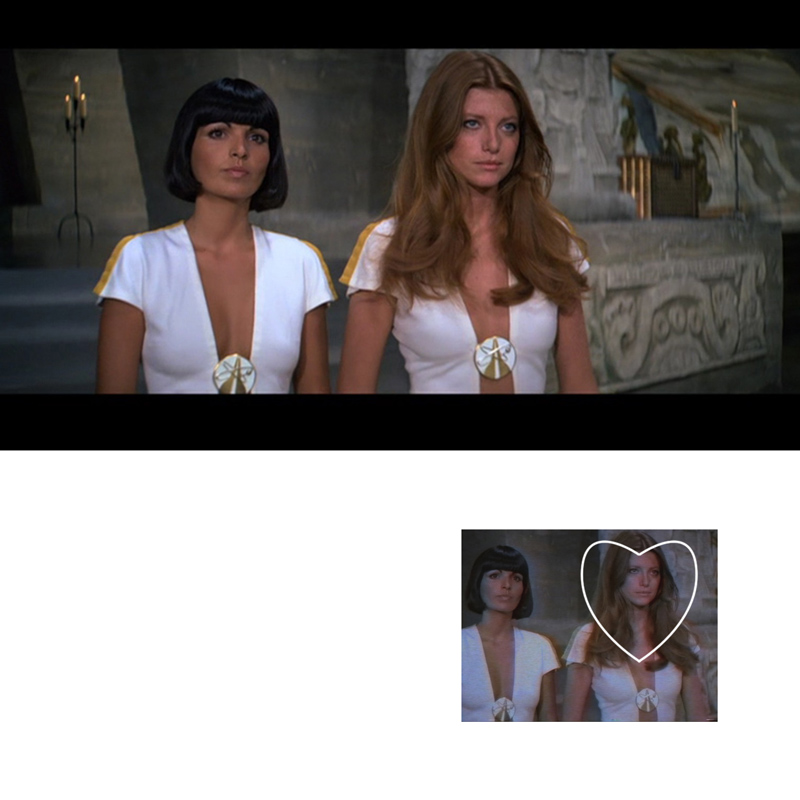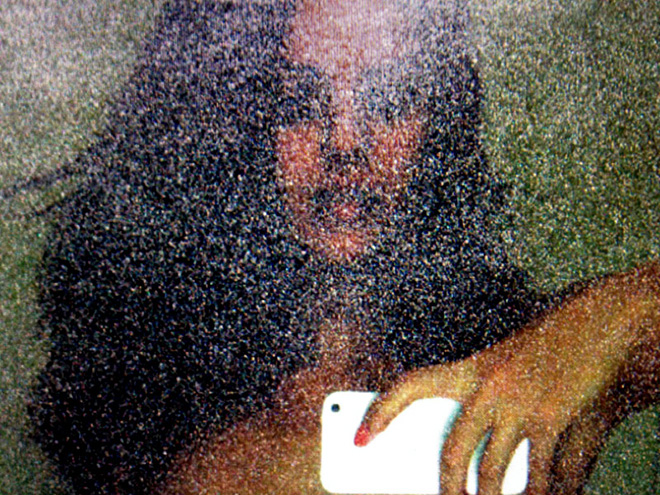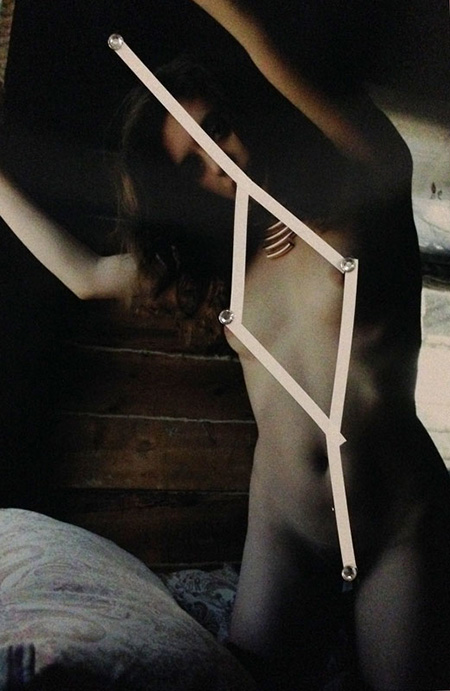beaux-arts
Those festivals ain’t my thing. Elon Musk keeps trying to get me to go to Burning Man. No thank you. […]
I used to date Ivanka, you know. […] Twelve years ago. Tommy Hilfiger, who was working with my daughter Kidada, said,“Ivanka wants to have dinner with you.” I said, “No problem. She’s a fine motherfucker.” She had the most beautiful legs I ever saw in my life. Wrong father, though.
{ Quincy Jones | Continue reading }
celebs, music | February 9th, 2018 1:18 pm

Often, damaged works of art end up in the vaults of insurance companies. Once the owner submits a claim on the damaged piece, a team of experts, appraisers, conservators and adjusters offer specialist advice on the artwork’s condition and devaluation. The economics of selling and repairing the work are weighed up, and generally, if the cost of restoring a work is far beyond what it is worth, the work will be claimed as “total loss”. The insurance company will pay out on the policy and, in exchange, retain the broken piece. The “total loss” artwork is effectively declared worthless, unsalvageable by both insurer and owner. From then on it belongs to the insurance company as salvage.
Some of these pieces, though, end up being exhibited by the Salvage Art Institute (SAI), which calls itself a “haven” for written-off works. Conceived by Elka Krajewska, an artist in New York, in 2009 during a chance meeting with a representative of AXA Art Insurance, it took her until 2012 to jump through enough legal hoops to persuade the insurer to donate some of their total-loss works to the SAI. A selection of these works is now on show in “No Longer Art”, a show at BNKR Space, a gallery in Munich.
{ The Economist/1843 | Continue reading }
welded steel, porcelain, wire mesh, canvas, grommets, and wire { Lee Bontecou, Untitled, 1980–98 }
art, economics | January 22nd, 2018 3:27 pm

People’s capacity to generate creative ideas is central to technological and cultural progress. Despite advances in the neuroscience of creativity, the field lacks clarity on whether a specific neural architecture distinguishes the highly creative brain. […]
We identified a brain network associated with creative ability comprised of regions within default, salience, and executive systems—neural circuits that often work in opposition. Across four independent datasets, we show that a person’s capacity to generate original ideas can be reliably predicted from the strength of functional connectivity within this network, indicating that creative thinking ability is characterized by a distinct brain connectivity profile.
{ PNAS | Continue reading | Read more }
related { Neurobiological differences between classical and jazz musicians at high and low levels of action planning }
music, neurosciences | January 22nd, 2018 12:19 pm
I know of an art historian who was asked to authenticate a work by Leonardo, and he was going to, you know, charge the normal kind of fee charged for doing this kind of thing — a low six figures. And the owner said, “No, no, no. We want to pay you a percentage of what it sells for.” Now, what is the chance that any art historian given that particular contract is gonna say, “Oh no, it’s not by a famous artist. It’s by Joe Blow and it will sell for a thousand bucks”?
{ Blake Gopnik | Continue reading | more }
art, economics | November 19th, 2017 6:27 pm

The cost of building the world’s skinniest skyscraper has ballooned so enormously that the 111 W. 57th St. project is facing imminent foreclosure while it’s less than one-quarter complete.
The 82-story skyscraper has risen fewer than 20 stories and is $50 million over budget.
[…]
“Apparently they omitted some very significant items in their budget including cranes, which are very expensive in New York and can run into the millions of dollars”
{ NY Post | Continue reading }
architecture, new york | July 27th, 2017 4:58 pm
art, halves-pairs | December 9th, 2016 4:11 pm

{ Storm Thorgerson, cover for Pink Floyd’s album Wish You Were Here, 1975 | US release, UK release }

For Pink Floyd’s 1975 triple platinum Wish You Were Here album, Capitol Records execs headed to the L.A. offices of Stunts Unlimited. Ronnie Rondell, 59, a veteran of TV shows such as Baretta and Charlie’s Angels, was cast as the man on fire. “I got $500 and only worked an hour.” Fellow stuntman Danny Rogers, 53, the glad-hander, was paid only $250 but caught a lot less heat during the carefully controlled shoot on a nearby movie lot, where a crew armed with fire extinguishers stood by. Rondell’s suit was painted with rubber cement and ignited three times before it ripped and his flame-retardant long Johns peeked through the holes. His eyebrows and eyelashes were singed in the process. “It’ll happen in a heartbeat,” says Rondell. “The fire wraps around your face real quick, like a barbecue thing. The wig was fried, it melted up into a ball.”
{ People | Continue reading }
fire, music, photogs | May 31st, 2016 6:25 am

A 2013 study published in the journal Circulation found that men who skipped breakfast had a significantly higher risk of coronary heart disease than men who ate breakfast. But, like almost all studies of breakfast, this is an association, not causation. […]
In a paper published in The American Journal of Clinical Nutrition in 2013, researchers reviewed the literature on the effect of breakfast on obesity to look specifically at this issue. They first noted that nutrition researchers love to publish results showing a correlation between skipping breakfast and obesity. […] They also found major flaws in the reporting of findings. People were consistently biased in interpreting their results in favor of a relationship between skipping breakfast and obesity. […]
Further confusing the field is a 2014 study that found that getting breakfast skippers to eat breakfast, and getting breakfast eaters to skip breakfast, made no difference with respect to weight loss. […]
Many of the studies are funded by the food industry, which has a clear bias. Kellogg funded a highly cited article that found that cereal for breakfast is associated with being thinner. The Quaker Oats Center of Excellence (part of PepsiCo) financed a trial that showed that eating oatmeal or frosted cornflakes reduces weight and cholesterol.
{ NY Times | Continue reading }
oil on canvas { Jeff Koons, Hair, 1999 }
related { Corn Flake Portraits of Pop Stars }
economics, food, drinks, restaurants, jeff koons | May 23rd, 2016 1:44 pm

Dinner is served at 7:16 and finished at 7:20 P.M. […]
My only nourishment consists of food that is white: eggs, sugar, grated bones, the fat of dead animals, veal, salt, coconuts, chicken cooked in white water, fruit-mould, rice, turnips, camphorated sausages, pastry, cheese (white varieties), cotton salad, and certain kinds of fish (without their skin). […]
My doctor has always told me to smoke.
{ Erik Satie | Continue reading }
art { Andy Warhol, Silver Car Crash (Double Disaster) (detail), 1963 }
experience, food, drinks, restaurants, music | May 18th, 2016 3:45 am
ideas, tom wesselmann | May 10th, 2016 3:18 pm

Katy Perry, Billy Joel and Rod Stewart are asking the U.S. government to reform provisions of copyright law that they say enrich large technology companies at their expense.
The three are among the more than 100 artists and managers who have filed petitions asking the U.S. Copyright Office to amend parts of the 1998 Digital Millennium Copyright Act. The office has said it will study the effects of so-called safe harbor provisions in the law, which shield services such as YouTube from liability when users upload copyrighted material without permission. […]
The industry is stepping up its fight as streaming becomes a more significant source of sales. Revenue from such services increased 29 percent last year, according to the Recording Industry Association of America, with most of that growth coming from paid subscription services that license music. Sales of CDs, along with online purchases of music, are shrinking.
{ Bloomberg | Continue reading }
painting { Dan Witz }
economics, music | April 4th, 2016 10:34 am
art, visual design | March 1st, 2016 1:50 pm

The problem we will address can be characterized in either one of two ways. The first is this: why do people pursue art that evokes negative emotions, when they tend to avoid things that evoke such emotions? The emphasis here is on the disagreeable nature of certain mental states. The second characterization emphasizes the disagreeable nature of their causes (which are also, typically, their objects): why do we appreciate tragic events in art when we don’t appreciate tragic events in life? […]
We think both questions involved in the paradox can be answered with reference to the fact that sad art acknowledges sad aspects of life. […] Acknowledging involves recognizing, giving credit, honoring, or doing justice. We think that sad art does just this for its subject matter. In this respect, works of sad art have much in common with monuments to real life tragedies. The difference is that since sad art typically touches on universal themes, it ‘commemorates’ not only specific events, but general aspects of life. […]
The acknowledgement theory says that people derive pleasure from the fact that certain aspects of life are acknowledged in works of art, and answers the question why we pursue tragic art with reference to this pleasure.
{ Philosophical Studies | Continue reading }
beaux-arts, ideas | February 15th, 2016 12:33 pm

Most fans in many popular sports pay less for their tickets than conventional economic theory would predict.
Which poses the question: are team owners therefore irrational?
Not necessarily. There are (at least?) four justifications for such apparent under-pricing.
First, say Krautmann and Berri, owners can recoup the revenues they lose from under-pricing tickets by making more in other ways: selling programmes, merchandise and over-priced food and drink in the stadium.
Secondly, Shane Sanders points out that it can be rational to under-price tickets to ensure that stadia are full. […]
Thirdly, higher ticket prices can have adverse compositional effects: they might price out younger and poorer fans but replace them with tourists […] a potentially life-long loyal young supporter is lost and a more fickle one is gained. […]
Fourthly, high ticket prices can make life harder for owners. They raise fans’ expectations.
{ Stumbling and Mumbling | Continue reading }
oil on wood { Ellsworth Kelly, Seine, 1951 }
Ellsworth Kelly, economics, marketing, sport | February 15th, 2016 12:30 pm

I do have a problem in reference to electronic dance music and pop culture in general. It is becoming more and more difficult for actual artists and talented people to survive. It’s turning every product that’s made in the culture into a commercial. Now, in order for anyone to make money, they have to be a part of an artisanal beer commercial. I can speak for me personally that I write pretty introspective thoughtful records; not good for selling beer. Technology has de-valued not just music, but the idea of artistry and people are no longer willing to pay.
{ Jay Denes | Continue reading }
The music business is something one suffers through in order to be able to make music full time. That being said, most of what gets made is simply a result of economic conditions in a given time period. There’s been no artist development in the record biz for over 20 years now. So, of course music has suffered greatly. People didn’t suddenly get untalented or insincere, there’s just no economic infrastructure left to support the development of excellence. So when it occurs it tends to be a bit of good luck, a hit on a first record that allows an individual or group to have a long enough career to develop their skills.
{ Jay Denes | Continue reading }
screenshot { Sean S. Baker, Tangerine, 2015 }
economics, music | February 6th, 2016 1:42 pm
art, hair | January 28th, 2016 2:26 pm
Ellsworth Kelly | December 28th, 2015 8:44 am

Experts say fakes have become one of the most vexing problems in the art market. […]
Two years ago, the center, known for its work in bioengineering, encryption and nanotechnology, set about developing a way to infuse paintings, sculptures and other artworks with complex molecules of DNA created in the lab. […]
The new approach, in its formative stage, would implant synthetic DNA, not the personal DNA of the artists, because of privacy issues and because a person’s DNA could conceivably be stolen and embedded, thus undermining the authority of such a marking protocol.
The developers said the bioengineered DNA would be unique to each item and provide an encrypted link between the art and a database that would hold the consensus of authoritative information about the work. The DNA details could be read by a scanner available to anyone in the art industry wanting to verify an object.
{ NY Times | Continue reading }
installation { Yayoi Kusama, The obliteration room, 2002-present }
art, genes, technology | October 22nd, 2015 11:40 am
health, music | September 24th, 2015 2:54 pm

























